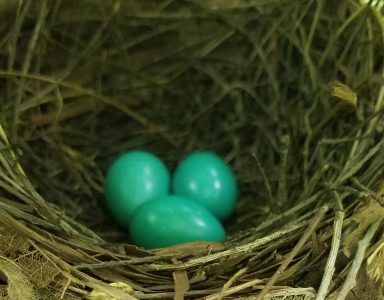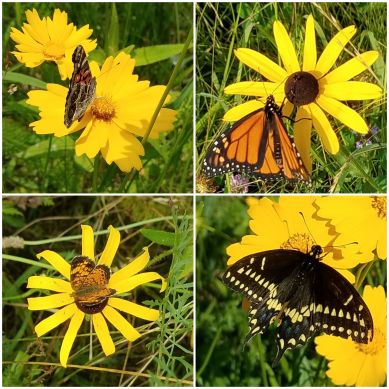During a recent winter walk in Eliza Howell Park, I stopped by some of the clusters of Mulberry trees that I visit in late June and early July, picking container in hand. Winter provides a good opportunity to note where and how they grow.
In Eliza Howell, almost all the Mulberry trees are found at the base of large trees that grow within the road loop. How close these trees grow to one another and to the larger tree is most evident in the winter when the leaves are off the branches.

I thought of the nursery rhyme (“All around the mulberry bush the monkey chased the weasel”) when I noted how completely mulberry trees surround the trunk of one cottonwood tree. If I were more clever or creative, I might try to complete a line that begins with “all around the cottonwood tree….”

Many mulberries are about 20 feet tall and, in their position under the taller trees, their branches spread and hang quite low. A lot of berries can be reached while standing on the ground. They progress from white to red to black, at which point they are ripe and ready.
Birds like mulberries, as do bird watchers.

A comment I have heard from individuals who have come upon mulberries for the first time is “they look like blackberries.” They do have a similar shape, but they grow on trees (blackberries grow on vines), and the fruit stems are very different. The taste is also different, of course, but that is best experienced by eating newly picked berries.
There are three different black-colored edible summer berries in Eliza Howell Park: Mulberry, Black Raspberry, Blackberry (in the order in which they ripen). Black raspberry also grows on vines.
In this collage, Mulberry is on the left, Blackberry is top right, and Black Raspberry is bottom right.

In my opinion, these three berries are the best foods to be harvested in Eliza Howell Park.
The first mulberry picking is at least 5 months away, but it is not too early to review the number and location of the trees. They may look to some like unwanted shrubs growing under larger trees, but they are worth getting to know.

Winter is also a good time to enjoy one of the results of summer picking.

Jam made by Margaret Weber


























